Hicks compass and'Watkin' 1881 clinometer compendium. Military film prop
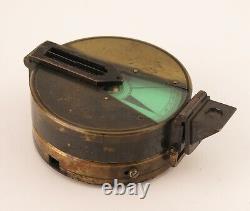
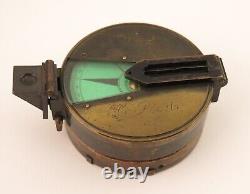
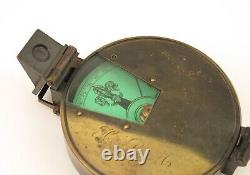
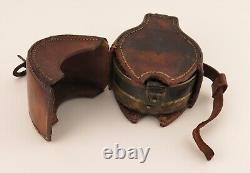
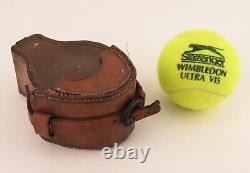
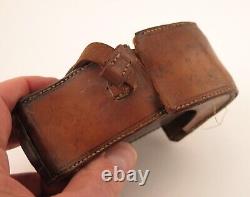
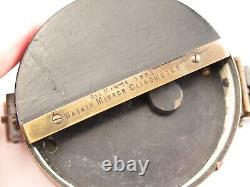
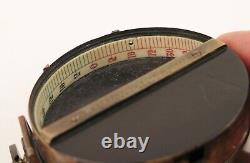
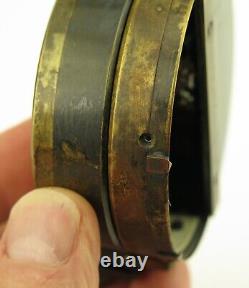
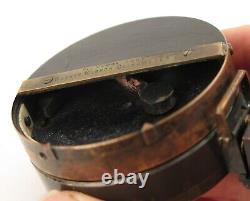
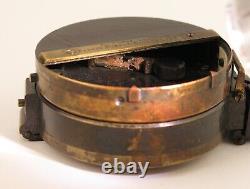
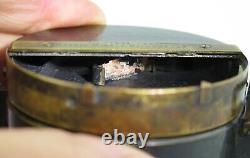
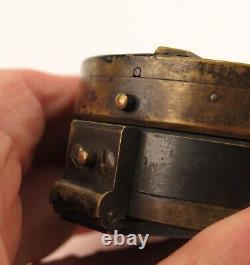
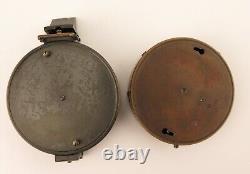
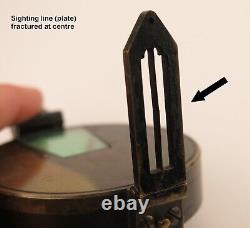
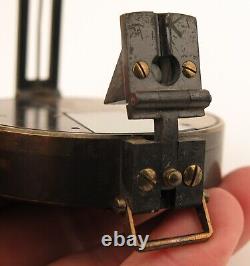
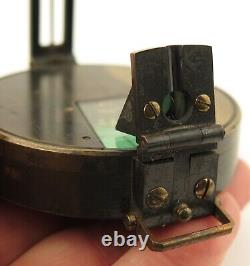
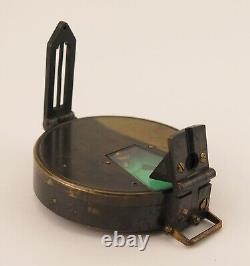
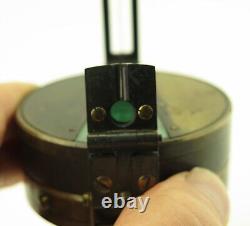
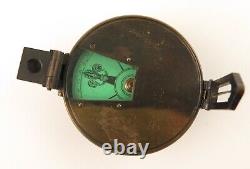
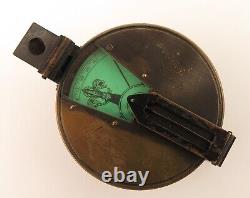

Hicks compass and'Watkin' 1881 clinometer compendium. A good Victorian pocket sighting compass/clinometer combination instrument. The instrument was made by James Joseph Hicks1837 - 1916 who operated from Hatton Gardens, London. The compass has no maker's name but the Hicks distinctive bright green card design was intended to enhance the night marching capabilities of the compass. This type of compass was used by the British Army, particularly by artillery and engineer officers, from around 1860 to 1900.
It is still in its original leather holder. The compass sighting plate engages a transit lock on the compass when folded down flat.
The prism can be move up and down by 5mm. Former owners engraved monogram HBM. Is dated 1881 (the Patent date). The clinometer detaches from the compass. There is a sliding catch, in the side, for engaging the pendulum to prevent it rattling.
There is also a small protruding spring catch to detach the clinometer from the compass. The two instruments fit together with bayonet type screws. 99mm long including sighting prism. Condition: The compass sighting line, which is a thin plate of metal has fractured at the centre. This is also missing its little brass pull button. Compass gives a bearing accurately when checked against a modern instrument. The clinometer has lost its mirror and cover glass. Otherwise the gravity drop works and sighting is through the small round aperture and larger square window. If the mirror glass was in place the viewer would see a split image showing the inclination angle reflected.The leather case flap hinge is worn and partly torn (see photographs). It is remarkable that it is still with the instrument.
A good instrument in authentic condition, suitable for renovation. Priced to account for condition.
Please examine photographs as these form part of the condition report.

